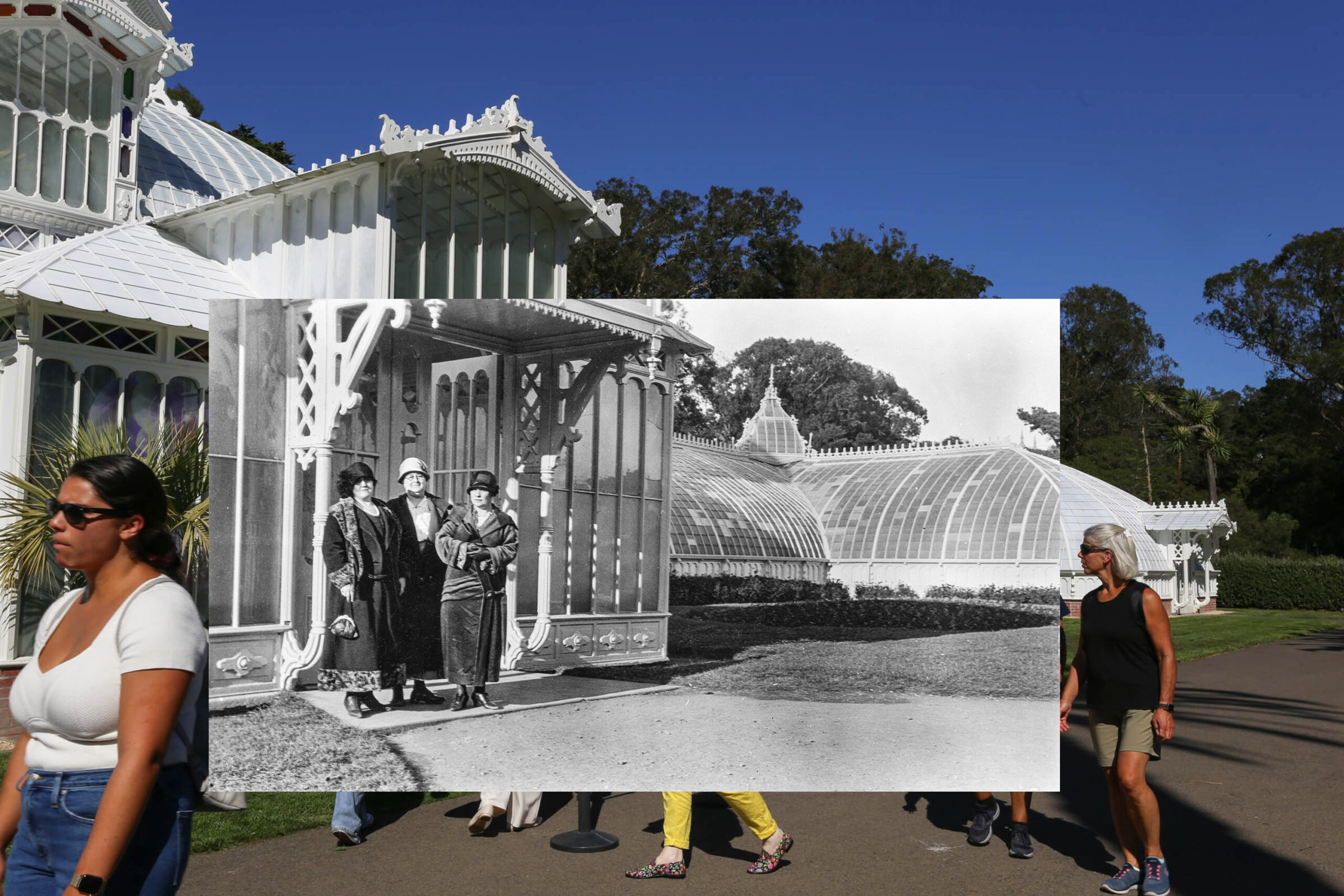This 1924 photograph (courtesy of OpenSF) depicts a common scene at Golden Gate Park: Three ladies linger outside the wooden, bright white Conservatory of Flowers. From its 19th century opening to today, millions have enjoyed the greenhouse’s tropical curiosities and Victorian vibe, as well as its meticulously curated flowerbeds and front lawn.
Behind its glass-paned dome sat a benefactor who quietly (and in some ways, accidentally) brought the conservatory into existence: James Lick, a man with a career so varied and a life so eccentric that he escapes easy description.
Some have called him the “Generous Miser,” for his crotchety disposition and extravagant tastes. Others more graciously dubbed Lick the most generous philanthropist San Francisco saw in its early years. Many contemporaries throughout the Bay Area nevertheless concluded that Lick might have been “of unsound mind.”
Of his many contributions to the Bay Area, the Conservatory of Flowers was one of his greatest and least expected. At the time of its construction, conservatories and greenhouses were popular among wealthy aristocrats in America and Europe—Lick included. Though he did not live long enough to see the conservatory finished, it opened to the public in 1879 and instantly became popular in SF.
But how did the Conservatory of Flowers arrive in Golden Gate Park? And how was miserly philanthropist James Lick involved?
The answer is a series of strange circumstances, involving a catty newspaper editor, a nasty breakup, and one man’s journey to have his legacy preserved in any way possible.
The Conservatory of Flowers Was Supposed To Be Standing in San Jose
James Lick came to San Francisco in 1848, having amassed a fortune in various international business ventures and in Bay Area real estate. In his free time, he was a practicing horticulturist, inspired by colorful tropical plants and the fashionable greenhouses he saw on private estates of his wealthy peers.
Naturally, Lick thought it would be a great idea to build a conservatory or two in his new homestead in California.
In the early 1860s, Lick ordered the models and materials to build two greenhouses: one at his estate in Santa Clara and one in the city of San Jose. Nobody knows why, exactly, Lick originally wanted to place one in San Jose.
But when a news editor at the San Jose Mercury News wrote a snarky column about the real estate mogul, insulting Lick’s shabby dress and erratic disposition, Lick had had enough. In a slightly petty but very on-brand act, Lick refused to gift the conservatory materials to San Jose and instead left them boxed up on his estate. They remained there until his death in 1876.
The Conservatory of Flowers seen today arrived in San Francisco by way of the Society of California Pioneers and the Academy of Sciences, which received Lick’s dusty boxes of greenhouse upon his death and erected the conservatory in Golden Gate Park between 1877 and 1879.
Building a Wildly Successful Flour Mill—Out of Spite
Lick was well known in SF for his real estate fortunes, but before that he was a Pennsylvanian with hardly a penny to his name. His early career ventures brought him through South America and Europe, as he took up the piano-building business and dabbled in fur trading.
His colorful career was spurred on by yet another chance encounter during his youth. Before his travels, Lick fell madly in love with a Pennsylvania local by the name of Barbara Snavely.
When Lick asked Snavely’s father for permission to marry, he refused Lick’s request, citing Lick’s lack of fortunes and grubby disposition. One San Jose newspaper in 1874 reported that the elder Snavely, a modest millworker, had warned Lick not to marry, “until he had a competency to support a wife.”
Lick, wounded by the rejection, promised Snavely that he would build a mill greater and more productive than anything Snavely could dream of—and he did. Nearly 40 years after his great rejection, Lick had amassed a large enough real estate fortune to build an extravagant and lucrative flour mill just outside of San Jose.
Snavely’s rejection ultimately set off the chain reaction of events that brought Lick to California, and by extension, the Conservatory of Flowers to San Francisco.
Who said nothing good comes from devastating heartbreak?
